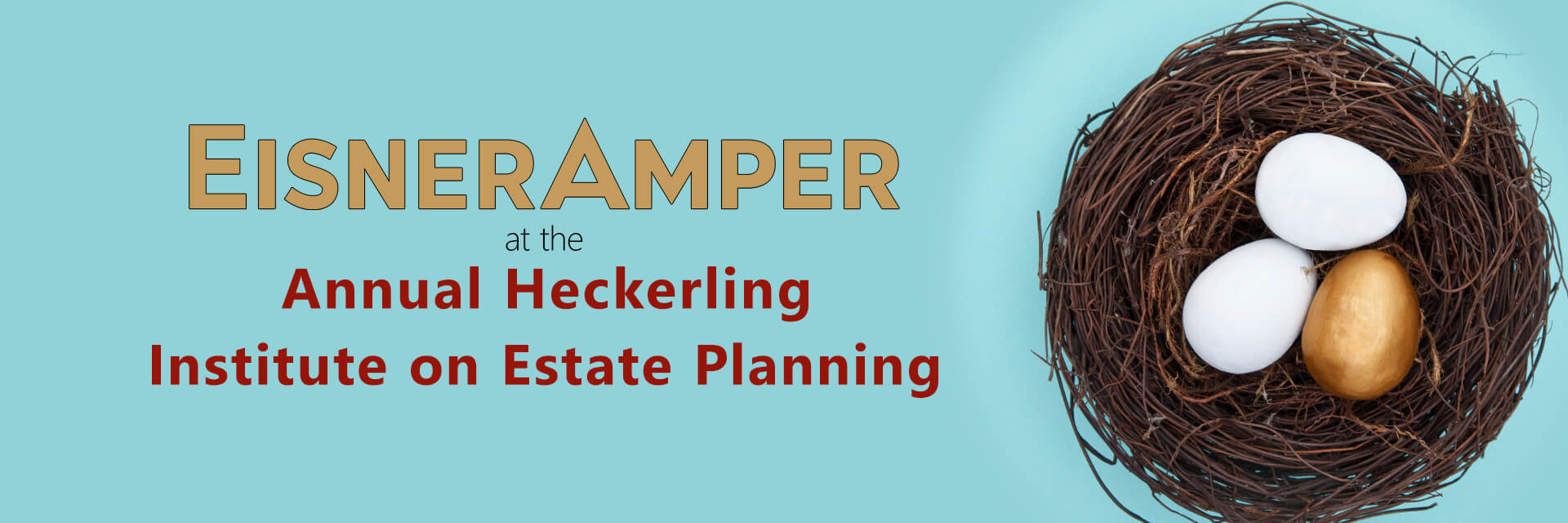
Blogging from Heckerling 2018: Post Two
- Published
- Jan 24, 2018
- Topics
- Share
Putting it On & Taking It Off: Managing Tax Basis Today for Tomorrow
The second day of the 2018 Heckerling Institute for Estate Planning kicked off with Paul Lee of Northern Trust discussing how to manage tax basis. Beneficiaries of estates and trusts can be subject to combined federal and state taxes on capital gains reaching as high as 36%. Thus, taking advantage of IRC Section 1014’s unlimited step-up in basis is a crucial part of estate planning. Under the Tax Cuts and Jobs Act (“Act”), the increased estate/gift/GST exemption is now around $11 million per person. It is unclear as to whether clients with estates well in excess of the $11 million should utilize the additional exemption. Paul’s belief prior to the Act was to avoid using the exemption until death. But now with the sunset of the Act in 2025, it might make sense to utilize the additional exemption prior to the reversion back to the 2017 exemption levels, especially if there is no claw-back provision.
Qualified small business stock under Section 1202 became more beneficial when the exclusion for gains on sales was increased to 100% for qualified stock acquired after Sept. 27, 2010. The recent tax law change reducing the federal corporate tax rate to 21% will continue to expand this popularity. Given the exclusion from gains, there is generally no advantage and savings to having the basis stepped-up in this stock. It should be treated as high basis stock for planning purposes. Section 1202 limits the excluded gain to the greater of $10 million dollars or ten times the adjusted basis in the stock (not including any step-up in basis). Many businesses start as partnerships and then convert directly or indirectly to corporations; in this instance it is possible to measure the converted or contributed partnership assets at FMV for purposes of the section 1202 basis computation without recognizing any gain on the contribution, which could significantly increase the potentially excluded gain.
The other great tax basis-planning tool continues to be grantor trusts, which allow for substitution of assets as well as the continued depletion of grantor’s assets by having the grantor pay the income taxes on the trust’s taxable income. Self-created promissory notes should be considered as options to replace low basis assets in grantor trusts.
Other items discussed to manage tax basis were:
- Converting to general partnerships (“GPs”) to limit valuation discounts to secure larger step-up when there is no taxable estate
- IRC Section 2038 marital trusts and obtaining double step-up
- Use contract derivatives with defective grantor trust for highly appreciated low or “negative” basis real estate holdings (derivative needs to be closed before death)
- Creating limited liability companies (“LLCs”) with defective grantor trusts and the grantor to secure step-up upon death using debt (Revenue Ruling 99-5)
- “Strip and shift” with family limited partnerships (“FLPs”) effective where there are very low and very high basis assets.
Blogging from Heckerling 2018
- Starting off on the right foot while avoiding foot faults -- Issues at the formation of a closely-held business
- Putting it On & Taking It Off: Managing Tax Basis Today for Tomorrow
- Recent Developments
- Business Succession: Abdicate? Affiliate? Alienate? Bifurcate? Syndicate? Liquidate? Vacillate? Don’t Wait. Cogitate and Participate
- Will you Still Need Me, Will you Still Feed Me, When I'm Sixty-Four?
- Dishing the Dirt on Planning for Real Estate Investors
- Doth Thou Roth?
- Beyond the Private Foundation
Contact EisnerAmper
If you have any questions, we'd like to hear from you.
Receive the latest business insights, analysis, and perspectives from EisnerAmper professionals.











